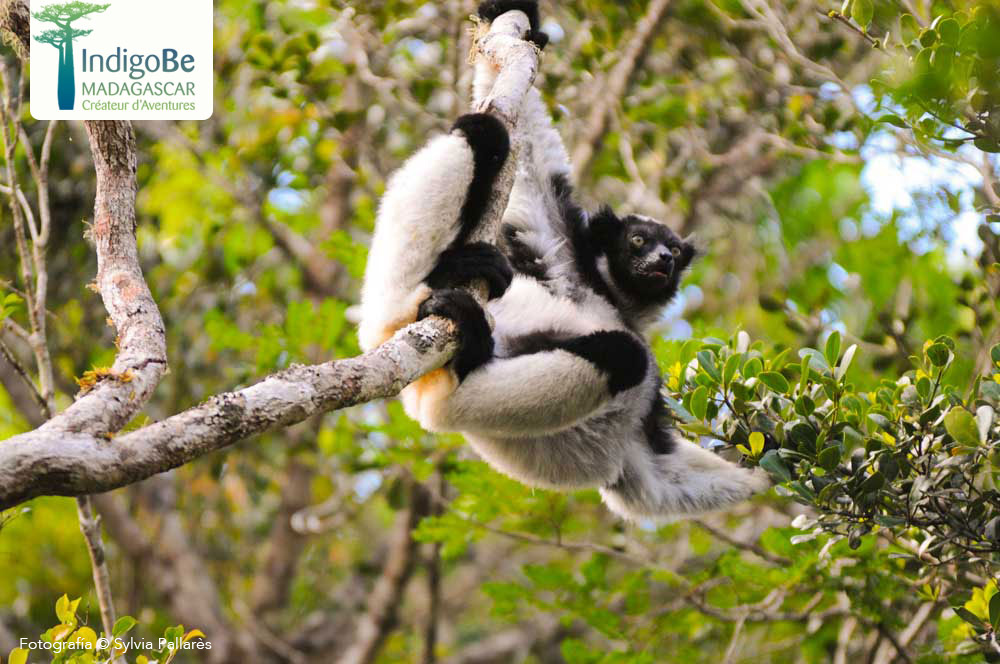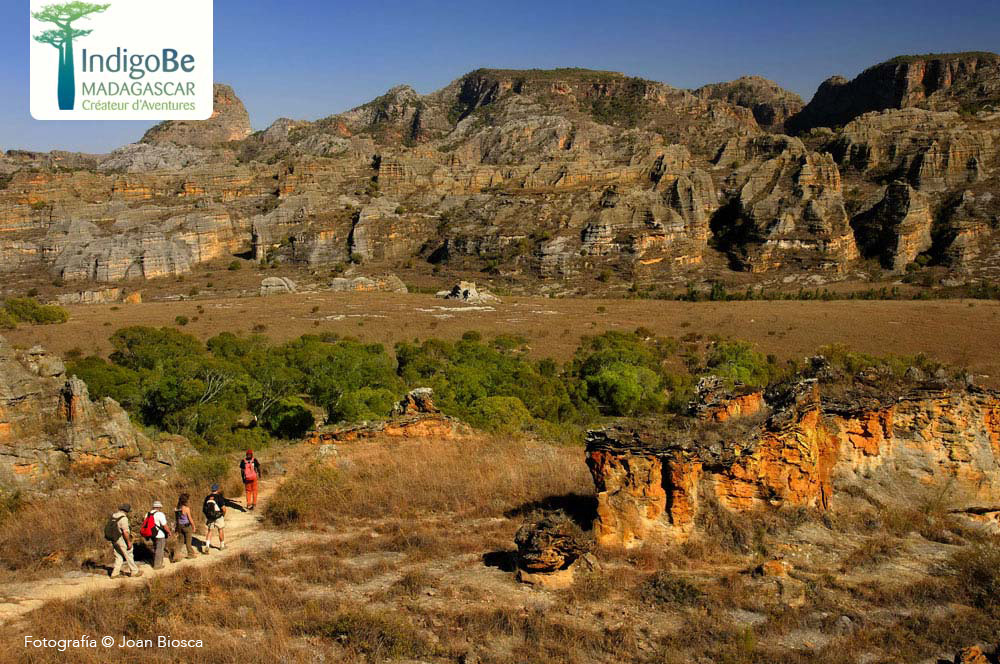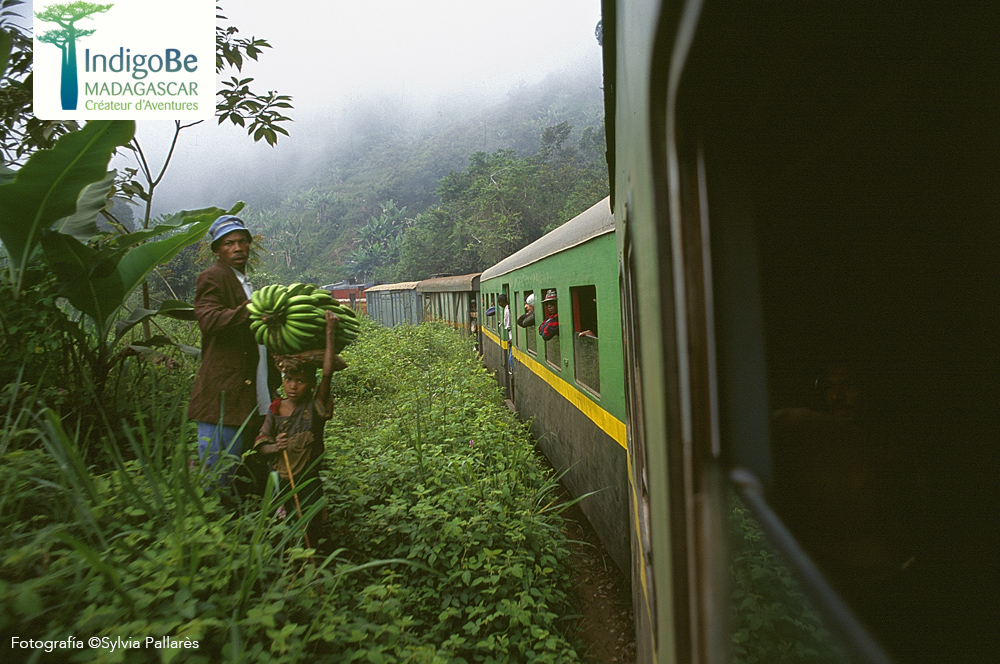Madagascar is the fourth largest island in the world. Discovering it is not a matter of one trip, or two, it takes several visits to get to know the secrets of the island continent. Here we tell you some of the best kept secrets on our island:

The famous Baobab Walk
Madagascar is the home of baobabs, there is no doubt about it and to see the best ones you have to come to the Far West.
There are 9 species of baobabs in the world, 7 of them are in Madagascar and 6 are endemic to the island. The baobabs in the photograph are Adansonia Grandidieri, the most abundant species in the west of the island.
Andasibe National Park
One of the most visited parks in the country, a must if you travel to the island continent. Andasibe National Park is divided into Analamazaotra National Park and Mantadia National Park. The most interesting area is still the Analamazaotra National Park, where you can easily observe the largest primate of the island, the famous Indri-Indri.
It also has other species of lemurs (the Eulemur Rubriventer, the Eulemur fulvus, the Varecia Variegata, the Propithecus diadema, the Cheirogaleus, the famous Aye-Aye…), as well as 109 species of birds, 51 species of reptiles (including the famous Boa Manditra and the chameleon Calumma parsonii,) and 84 species of amphibians form this spectacular primary rainforest.Also 109 species of birds, 51 species of reptiles (including the famous Boa Manditra and the chameleon Calumma parsonii) and 84 species of amphibians make up this spectacular primary rainforest full of lianas, moss, ferns, pandanus madagascariensis… It is worth noting that of the 120 varieties of wild orchids, 100% are endemic to Madagascar.
Isalo National Park
The wilderness also exists on the island continent. The Isalo National Park is one of the most famous in the country, and has a variety of landscapes that make it a unique enclave. Its entire extension can be considered a true sanctuary for the island’s endemic flora and fauna species. The biological diversity of the Isalo, together with its spectacular landscape, make it a must-see for all travelers visiting Madagascar. This ruiniform massif is formed by continental stoneware of the Jurassic era. The most visited park in the country has deep canyons where water flows in the form of streams, Bara tombs, caves where the Portuguese and Arabs used to hide, this park is a living testimony of the history of Madagascar. The Isalo is located in the region of the Bara ethnic group, skilled cattle ranchers and famous for their animist traditions that include pre-nuptial cattle rustling and various initiation ceremonies for the young. But the Park is much more than landscape. Well known by specialists are its varied and endemic species of fauna and flora. Isalo is a real natural zoo where several species of lemurs are found: the Lemur Catta Linnaeus, the Eulemur Fulvus Rufus, the Eulemur Rufitrons…
The Jungle Train
On the island of Madagascar, a train from another time links the highlands to the Indian coast on an endless journey through tea, coffee and banana plantations, through the rainforest known as the “Eastern Corridor”. Like everything else in Madagascar, the Corridor Train, or Jungle Train as we christen it at IndigoBe, is a train from another era in which the surreal scenes of this bewildering Africa take place. A curiosity is that the train crosses the runway of an airfield 😱. 
The Tsingys de Bemaraha National Park
Declared a World Heritage Site by UNESCO, it is one of the jewels of western Madagascar. It is located in the region of the Sakalava ethnic group, one of the most numerous and interesting of the island. Bemaraha offers a landscape of canyons, gorges, caves, stoneware peaks of various colors ranging from red to pink, passing through ocher, limestone massifs and granites sculpted through history by water and winds. These are limestones (ancient seabeds), karst (called paleokars) from the Jurassic period, when the island was submerged in its northwestern part. Very ancient geological formations surrounded by mystery, in the midst of a spectacular landscape that thrills at certain times of the day, especially with the magnificent sunset. The heat is suffocating but the result is worth it: the unrepeatable sensation of contemplating the Tsingys from one of the numerous suspension bridges or platforms and viewpoints is something we will never forget.
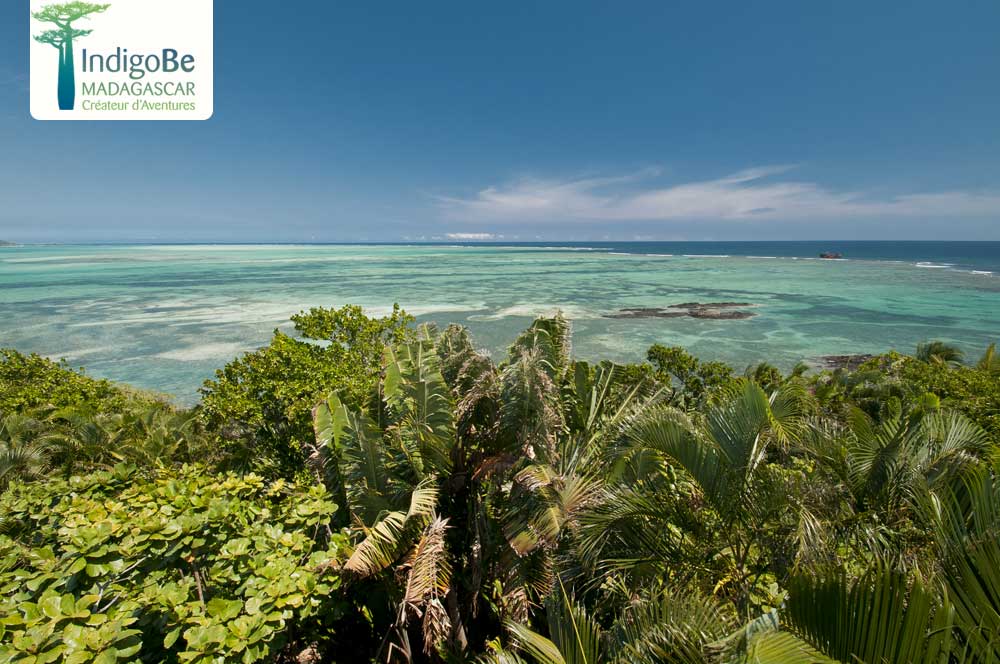
Paradisiacal beaches and islands where to daydream
Our experience of more than 15 years guiding travelers eager for knowledge, has allowed us to travel the 4.828 kilometers of coastline available on the island of Madagascar, and enables us to choose the 10 best beaches in the country or 20 or 30 😊: the beaches of Ankasy, Anakao, Salary, Tsiandamba, Andavadoaka, Masoala, Anjajavy, Belehoka, Ambola, Itampolo … follow one after the other along the west coastline of Madagascar, each one better than the other.
And what about the islands of Nosy Saba, Nosy Be, Nosy Boraha, Nosy Iranja, the Mitsio and Radama archipelagos, Nosy Komba, Nosy Tanikely, Nosy Saba… Small islands and even islets with only one hotel or two or three… 6, 10, 24 bungalows that is what we will find in Madagascar. Neither mass tourism nor hotels with 300 rooms. With the exception of Nosy Be, the “Big Island” where most of the country’s beach tourism is concentrated.
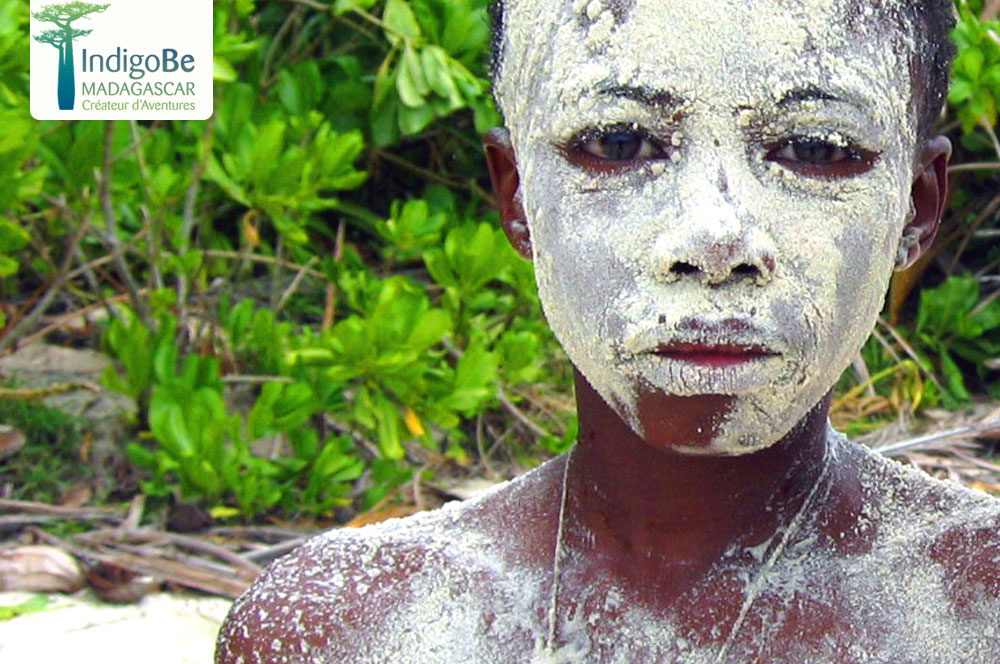
Great variety of ethnicities
If there is one thing that makes the island of Madagascar stand out, it is its great ethnic variety and richness. More than 20 main tribes make up this ethnic and cultural mosaic that extends throughout the island. Among the main tribes are the Merina (highlanders from Polynesia, Melanesia and Indonesia); the Betsileo (from Indonesia); the Antemoro (a cross between Arab seafarers and tribes from the Indian Ocean Islands); the Vezo (from the coast of Mozambique); the Antandroy (coming from some corner of Africa), the Betsimararaka (from the Indian Ocean), the Bara (coming from Africa), the Sakalava (coming from Africa), the Ankaranana (coming from the islands of the Swahili zone), the Tanala (uncertain origin); the Zafimaniry (uncertain origin); the Comorians, Malays, Chinese, Arabs, Persians, Indians, Europeans, etc.
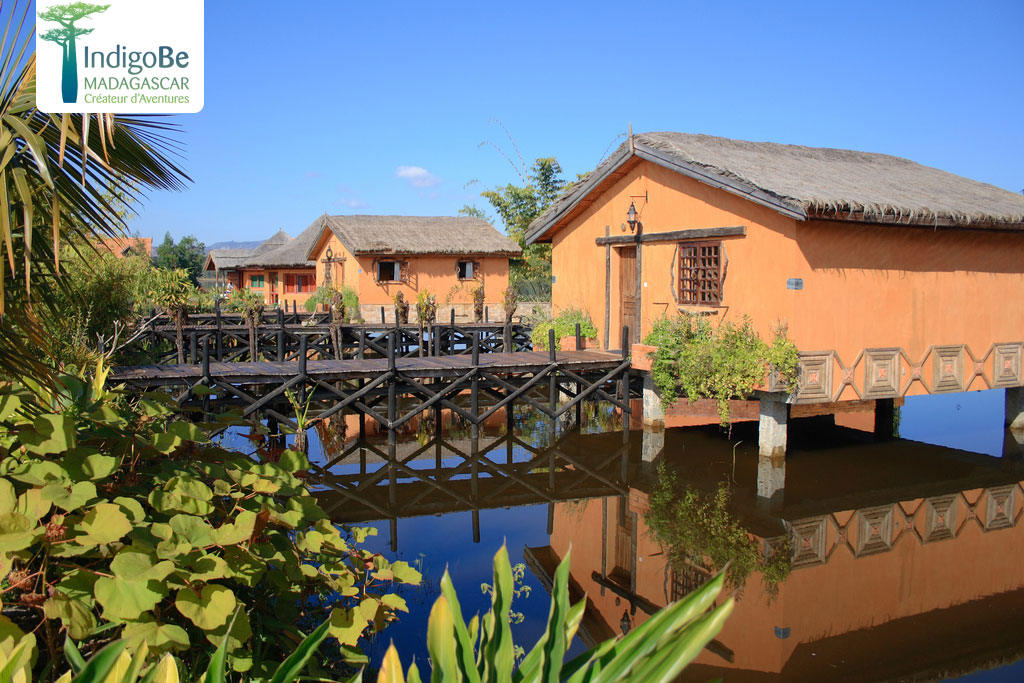
The Lac Hotel in Sahambavy
One of the most valued hotels by our travelers, it is located in the Malagasy Highlands, in the town of Sahambavy next to the only tea plantations in the country and the lake with the same name. It has its own train station where we embark on the adventure of crossing the jungle of the Eastern Corridor in this train from another time. It is the only hotel in the country to offer overwater bungalows and a train carriage converted into an original Suite for honeymooners.
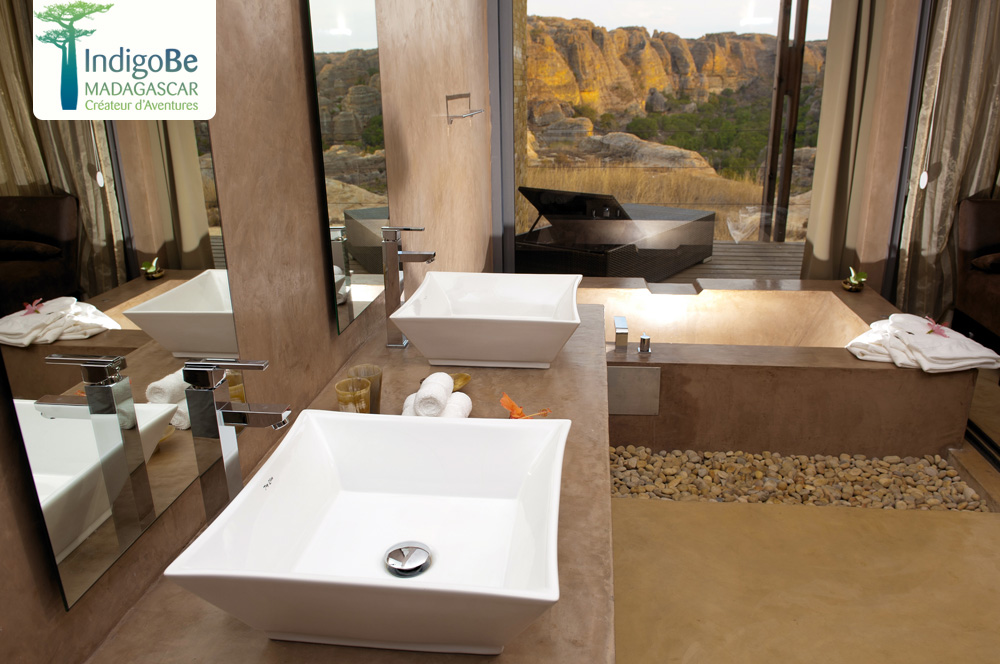 The Isalo Rock Lodge
The Isalo Rock Lodge
Another remarkable hotel on the island is this 4*LUXE located in the Isalo National Park. Since its opening it became the best hotel in the area, but what we highlight above all is its stunning location, surrounded by the Isalo stoneware massif it delights us with an unforgettable view.
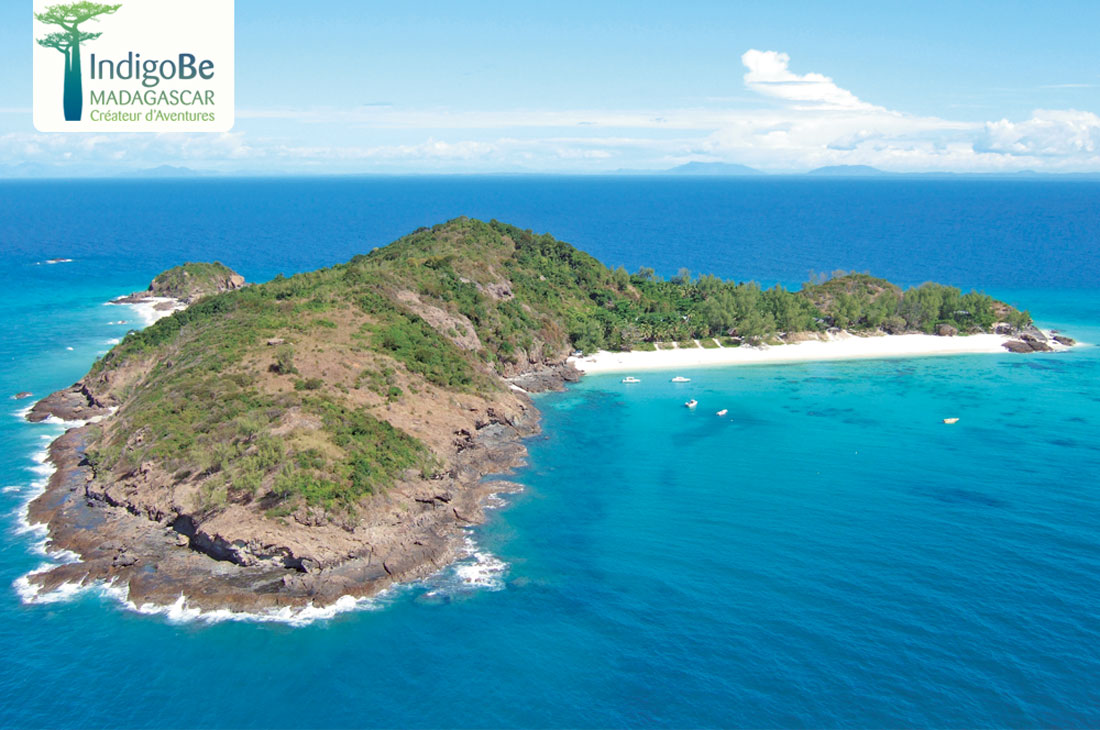
The Tsarabanjina Lodge
Madagascar’s lost paradise. This private island-hotel, accessible only by boat or helicopter from Nosy Be, is located in the Mitsio Archipelago. One of the most paradisiacal islands of Madagascar, it has only one lodge, the exclusive Tsarabanjina Lodge, with 25 perfectly equipped and recently renovated villas. Impressive “spot” for lovers of scuba diving and snorkeling. It is the ideal end to our regular tours “After the Greenheart or the Island Continent”.
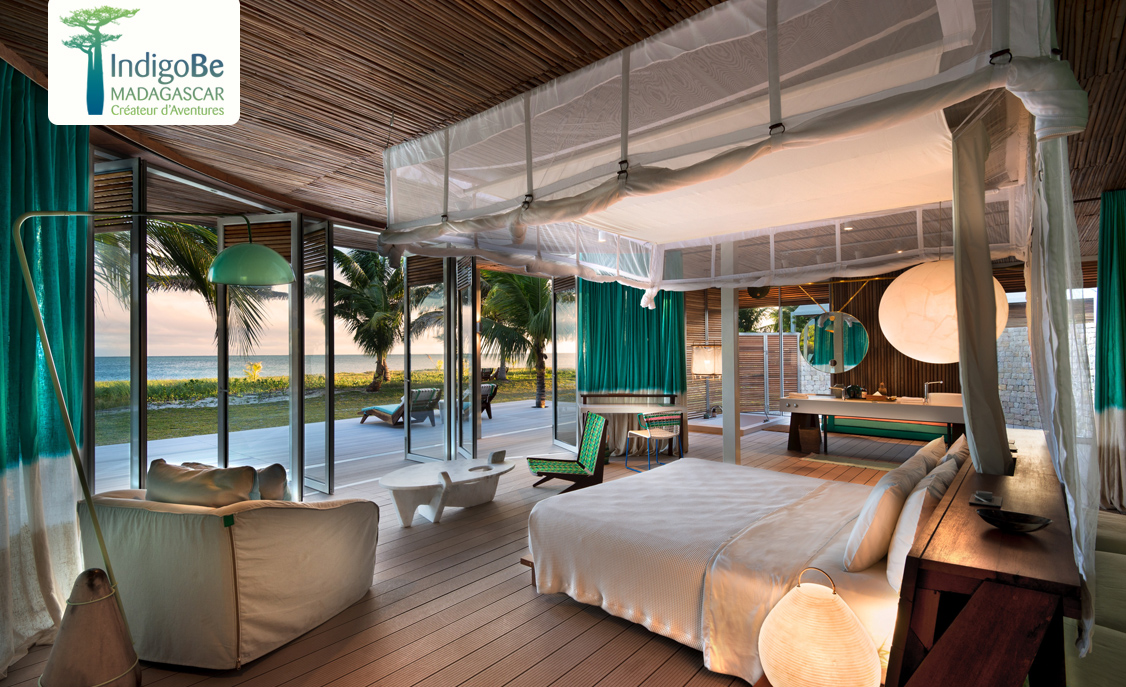 The Miavana Sanctuary Lodge
The Miavana Sanctuary Lodge
A newcomer to the island, this luxurious lodge offers 14 private villas of 450m2 where you can isolate yourself from the world. 100% intimate, located on a private island in the north of the country, Nosy Ankao. It has become a refuge for celebrities and personalities from the world of sports, politics, cinema…
Sergi Formentin, IndigoBe Madagascar






